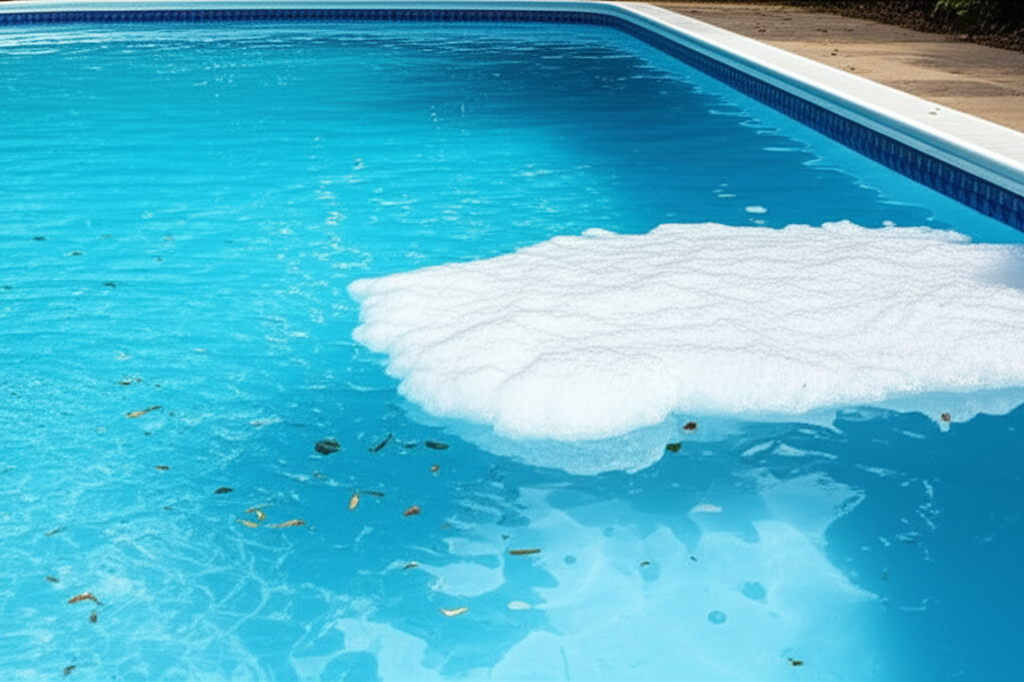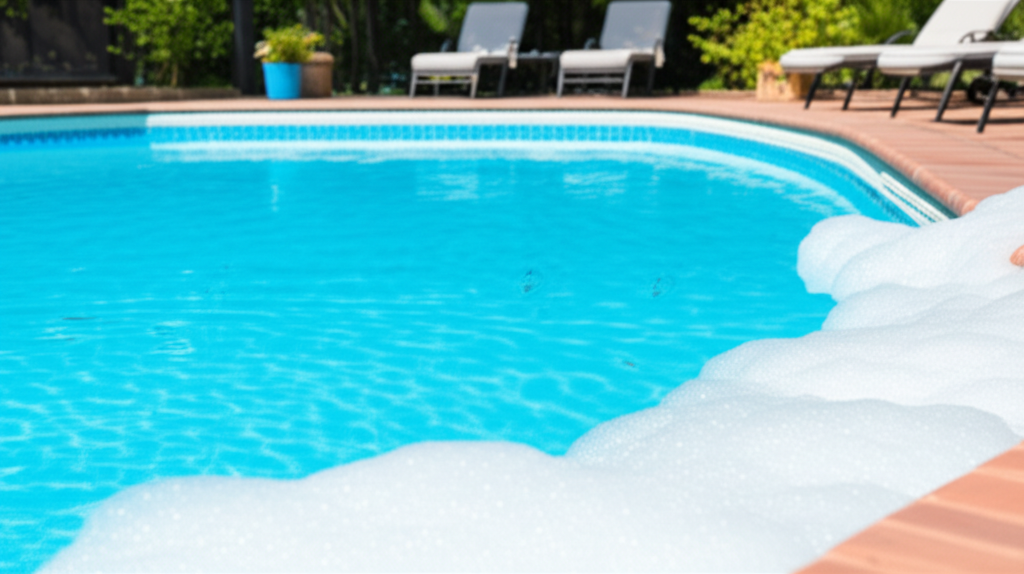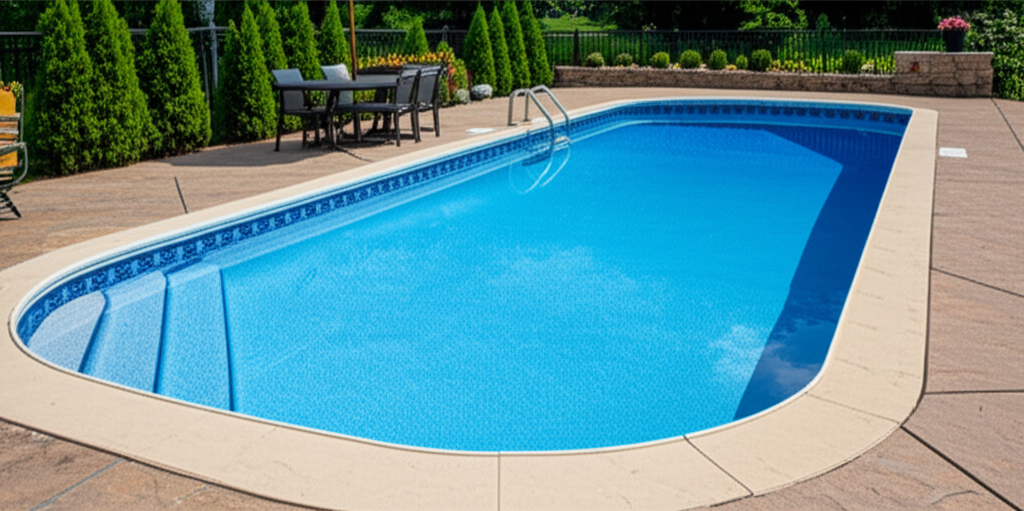- What is Foamy Pool Water, Anyway?
- Common Pool Foam Causes: Unmasking the Culprits
- Simple Fixes for a Foamy Pool
- Preventing Future Foamy Pool Incidents
Foamy Pool water can quickly turn a sparkling oasis into an uninviting mystery. While a few temporary bubbles after turning on jets or adding chemicals are normal, persistent, sudsy foam clinging to your pool’s surface is a clear indicator that something is amiss with your water chemistry or overall sanitation. Understanding the root causes of this common nuisance is the first step toward restoring your pool’s pristine condition and ensuring a healthy swimming environment for everyone.
What is Foamy Pool Water, Anyway?
Before diving into the causes, let’s understand what foam is. Foam is essentially air trapped in water by “surfactants”—molecules that reduce the surface tension of water. Think of soap bubbles: the soap acts as a surfactant, allowing air to be encapsulated in thin films of water, creating bubbles that last. In your pool, various contaminants can act as these surfactants, leading to persistent foam rather than fleeting bubbles.
Common Pool Foam Causes: Unmasking the Culprits
Numerous factors can contribute to that unwanted layer of suds. Identifying the specific pool foam causes is crucial for an effective fix.
1. Low Calcium Hardness: Your pool water needs a certain level of calcium (typically 200-400 ppm) to be balanced. Water that is too “soft” (low calcium hardness) has a lower surface tension. This makes it easier for air to get trapped and for foam to form and persist from other contaminants, even those present in small amounts. Think of hard water as having more “structure” that resists bubble formation.
2. Excessive Organic Load: This is arguably the most frequent culprit. Swimmers introduce a plethora of organic compounds into the water, including:
Suntan lotions, sunscreens, and body oils
Cosmetics, hair products, and perfume
Sweat and dead skin cells
Urine (yes, even a little goes a long way)
Pet dander (if pets swim)
Beyond swimmers, environmental factors like pollen, leaves, grass clippings, and even detergents from cleaning surrounding decks can contribute. As these organic materials break down, they act as surfactants, directly causing foam.
3. Algae Treatment Residue: While algaecides are essential for controlling algae, some types, especially those with quaternary ammonium compounds, can be inherently sudsy, particularly if overdosed or if your pool has low calcium hardness. Dead or dying algae themselves can also contribute to organic load and foam.
4. Improper Chemical Dosing or Interactions:
Overdosing Pool Clarifier: Clarifiers work by clumping small particles together to make them easier for your filter to capture. However, using too much can sometimes lead to foaming, as some clarifiers have a high polymer content that acts as a surfactant.
Chemical Mixing: Never mix different pool chemicals directly. Some combinations can produce unintended reactions, including sudsing. Always add chemicals separately, allowing for circulation between additions.
Low Sanitizer Levels: If your chlorine (or other sanitizer) levels are consistently low, it can’t effectively break down the organic contaminants mentioned above. These contaminants then build up and contribute to foaming.
5. Environmental Contaminants:
Soap or Detergent Runoff: Washing a car near the pool, using household cleaning products to clean the deck that then drain into the pool, or even laundry detergent from nearby clotheslines can introduce significant amounts of sudsing agents.
Heavy Rain: Very heavy rainfall can wash airborne pollutants, pollen, and even soaps from nearby surfaces into the pool.
6. Air in the System: While typically producing fleeting bubbles rather than persistent foam, air leaks on the suction side of your pump (e.g., loose skimmer lid, low water level in the skimmer, loose pump lid, damaged o-ring) can introduce a lot of air. If there are also surfactants in the water, this can exacerbate foaming.
Simple Fixes for a Foamy Pool
Once you’ve zeroed in on the potential cause, implementing the right solution is straightforward.
1. Test Your Water Thoroughly: This is always the first and most critical step. Use reliable test strips or a liquid test kit to check:
Calcium Hardness: If it’s below 150-200 ppm, add a calcium hardness increaser according to product instructions.
pH, Alkalinity, and Cyanuric Acid (CYA): Ensure these are all within their ideal ranges. Unbalanced water can stress your sanitizer and lead to other problems that manifest as foam.
Free Chlorine: If your free chlorine is low, it means organic matter isn’t being oxidized.
Total Dissolved Solids (TDS): High TDS levels often indicate a heavy build-up of organic contaminants and other dissolved substances, which can contribute to foam.
2. Shock Your Pool: A robust dose of granular chlorine shock (calcium hypochlorite or dichlor) will rapidly oxidize and break down organic contaminants and kill any hidden algae. Follow the product’s instructions for “super-chlorination” or shocking. This is often the quickest way to tackle an organic overload.
3. Run Your Filter Extensively: After shocking, let your filter run for at least 24-48 hours. This will help remove the broken-down contaminants and any other particles the shock treatment caused to clump. Clean or backwash your filter as needed.
4. Consider an Enzyme Product: Pool enzymes are specifically designed to break down non-living organic contaminants like oils, lotions, and greases. Adding an enzyme product can be an excellent proactive measure and a powerful corrective action for an organically overloaded pool.
5. Use an Anti-Foam Product (Temporary Fix): For an immediate, albeit temporary, solution, you can add a small amount of an anti-foam product designed for pools. These products work by breaking down the surface tension that allows foam to persist. However, remember this only treats the symptom, not the underlying cause. You’ll still need to address the root problem.
6. Backwash/Clean Your Filter: A dirty filter can’t remove contaminants effectively. Ensure your sand filter is backwashed, cartridge filter is cleaned, or DE filter is backwashed and recharged according to its schedule and pool usage.
7. Conduct a Partial Drain & Refill: If your water tests show very high TDS levels, a partial drain (25-50% of the pool water) and refill with fresh water might be necessary. This dilutes accumulated contaminants and resets your water chemistry.
Preventing Future Foamy Pool Incidents
Prevention is always better than cure.
Enforce Pre-Swim Showers: Encourage everyone to shower before entering the pool to rinse off lotions, oils, and cosmetics.
Regular Skimming and Cleaning: Daily skimming removes debris before it can break down. Regular brushing and vacuuming also help.
Consistent Water Testing and Balancing: Make water testing a routine, and adjust chemicals as soon as imbalances are detected.
Maintain Proper Sanitizer Levels: Ensure your chlorine or other sanitizer levels are always within the ideal range to continuously break down organic matter.
Be Mindful of Surroundings: Avoid using soaps or detergents near the pool, and ensure proper drainage away from the pool when cleaning patios or decks.
Use High-Quality Pool Chemicals: Stick to reputable brands and follow dosing instructions precisely.
A foamy pool is usually a clear sign that your water chemistry is off or that there’s an excessive build-up of organic material. By systematically testing your water, addressing imbalances, and adopting consistent maintenance practices, you can swiftly banish the foam and keep your pool crystal clear and inviting all season long.




